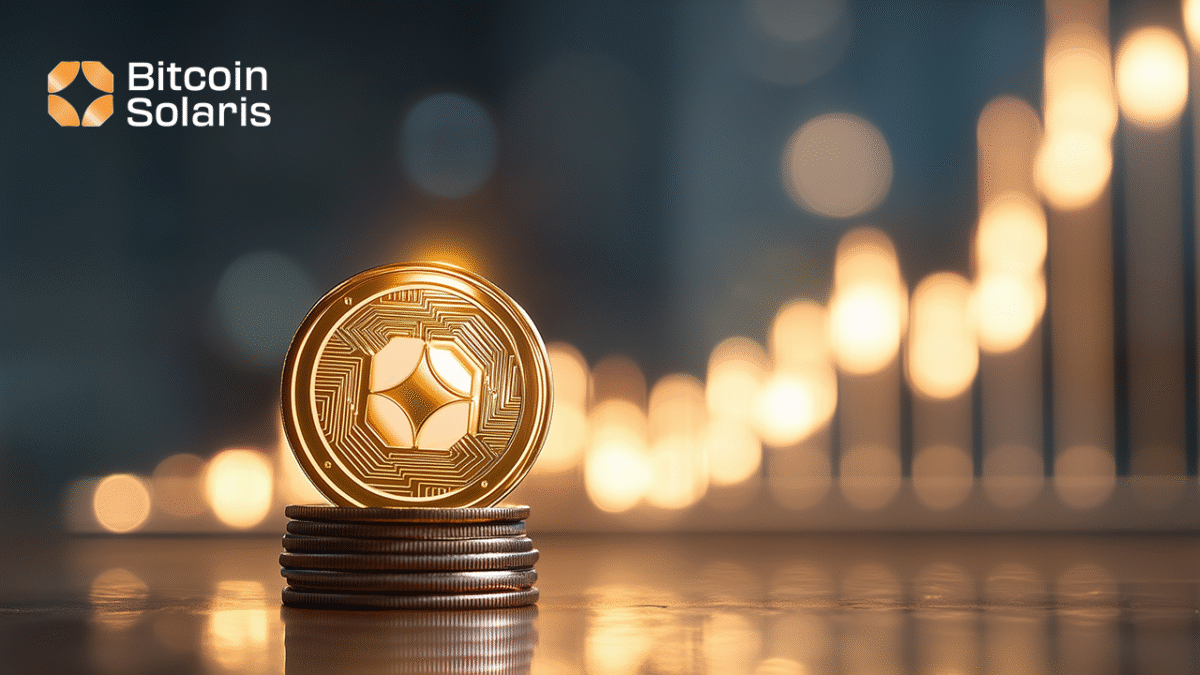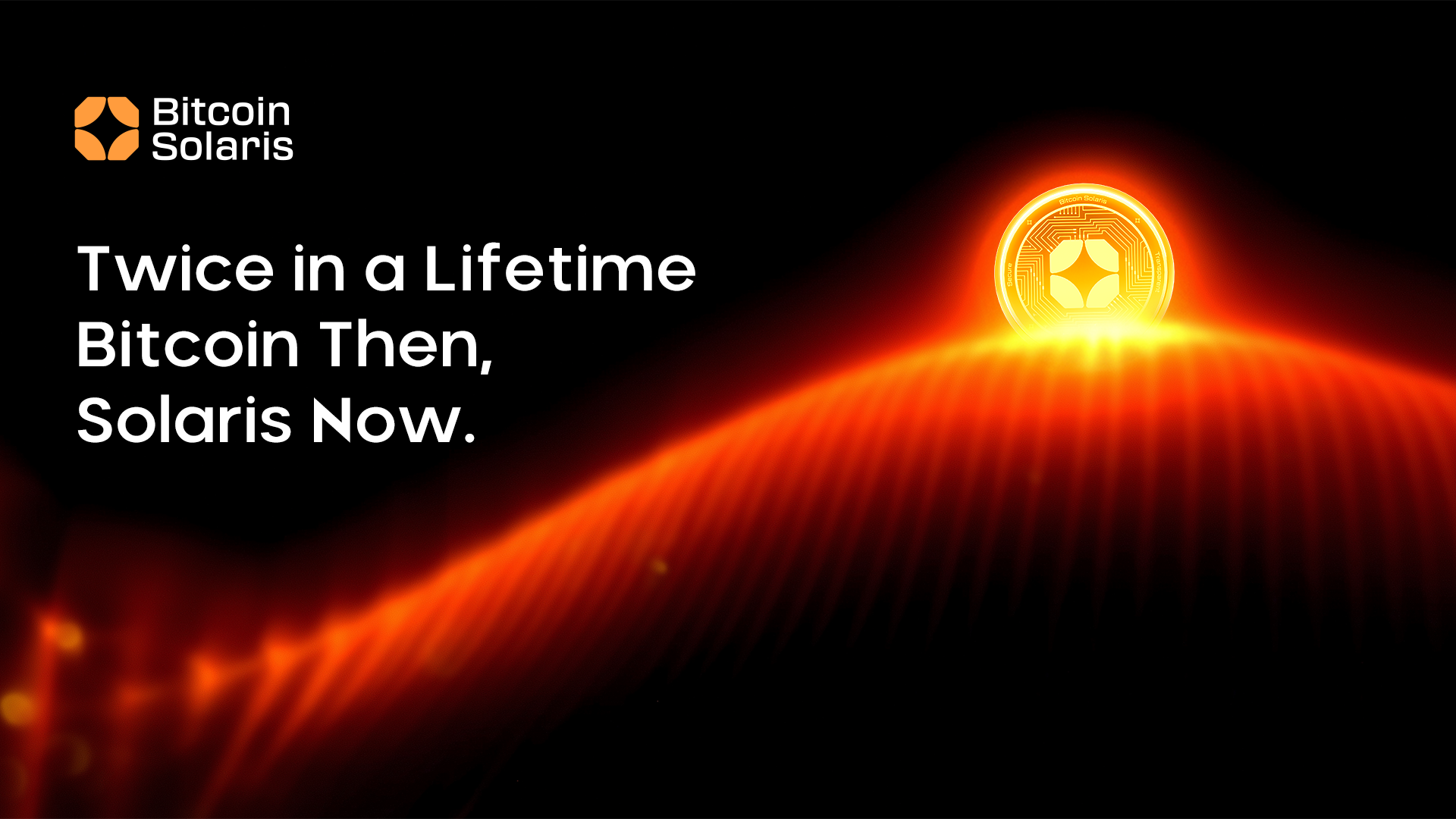Crypto investors have spent years watching slow blockchains struggle under pressure. Delays, congestion, and high fees plague networks that were once thought unstoppable. In 2025, speed matters more than ever. That is exactly why Bitcoin Solaris is gaining so much attention as altcoin season heats up. Its 2-second finality and 10,000+ TPS capacity make it an easy choice for those seeking the next-generation blockchain. While others talk about fixing speed someday, Bitcoin Solaris delivers it right now.
Legacy Chains Are Good, But Not Fast
Legacy blockchains like Bitcoin and Ethereum still dominate headlines, but they are hardly the benchmark for speed anymore. Bitcoin averages a 10-minute block time, Ethereum sits at around 12 seconds post-merge. Both are too slow to power the future of finance, gaming, or decentralized apps at scale. Bitcoin Solaris fixes this problem head-on with a dual-layer system. The Base Layer handles PoW security, and the Solaris Layer runs Delegated Proof-of-Stake with 2-second transaction finality and 100,000 TPS throughput.
What Makes Bitcoin Solaris So Fast?
The speed comes from its innovative hybrid consensus mechanism. Bitcoin Solaris blends Proof-of-Work and Delegated Proof-of-Stake across two distinct layers. The Base Layer uses SHA-256 and anchors security with a familiar Bitcoin-like structure. The Solaris Layer, however, is where the magic happens.
- 21 elected validators rotate every 24 hours
- Blocks are confirmed every 15 seconds on-chain, with 2-second transaction finality through cross-layer commitments
- Cross-layer updates ensure security, speed, and decentralization remain intact

- Up to 100,000 TPS scalability through dynamic block sizes and efficient validator cycles
What Bitcoin Did for the Few BTC-S Is Doing for the Many
On top of this, the platform integrates with Solana for immediate cross-chain functionality and access to up to 65,000 TPS through Proof of History. It’s speed without sacrificing the fundamentals.
Mobile Mining, Massive Opportunities
Beyond speed, Bitcoin Solaris stands out for putting mining in the hands of the masses. The upcoming Solaris Nova app enables mobile and desktop users to participate in mining through an intuitive platform. No $10,000 rigs required. Instead, the focus is on:
- Energy efficiency
- Device compatibility (from ASIC to smartphones)
- Accessible mining that rewards contributions fairly
To estimate potential mining earnings, users can check out the official calculator.
Presale Momentum Keeps Growing
Bitcoin Solaris is closing in on the finish line of its presale. Over 15,000 users have already joined, contributing more than $7.2M. The launch price is locked at $20 per token, while the current presale price sits at $12 with a 4% bonus. Only about 2 weeks remain until this explosive presale wraps up.
To receive your tokens on launch day, Bitcoin Solaris recommends using wallets like Trust Wallet or Metamask for seamless delivery.
Influencers are also fueling the hype. A detailed review by Token Galaxy covers more reasons why Bitcoin Solaris is rapidly becoming one of the most talked-about projects of the year.
Rewards Built for Real Adoption
Bitcoin Solaris understands that the community drives adoption. Its rewards structure incentivizes miners, validators, and the wider ecosystem through a transparent and balanced approach:
- 40% of rewards to miners on the Base Layer
- 25% to Solaris Layer validators
- 20% to stakers
- 10% to the development fund
- 5% to community initiatives
Rewards factor in device contribution, participation duration, and network demand. Transparency is key, with public dashboards and quarterly reports ensuring accountability.
Roadmap: A Clear Vision Forward
Bitcoin Solaris has a well-structured roadmap that ensures long-term growth and sustainability:
Phase 1 (Q2–Q4 2025):
Launch, presale, whitepaper, team expansion, protocol development
Phase 2 (Q1 2026):
Testnet launch, wallet rollout, optimization of dual-layer architecture, Solana bridge integration
Phase 3 (Q2 2026):
Final testing, exchange listings, marketing expansion, developer toolkits
Phase 4 (Q3 2026):
Mainnet launch, Solaris Nova app release, governance model integration, major partnerships
Phase 5 (Q4 2026):
Ecosystem expansion with mining marketplaces, DApp accelerator, and hardware wallet integration
Phase 6 (Q1–Q2 2027):
Layer-2 scaling, quantum resistance upgrades, new DEX, global validator network expansion
Phase 7 (Q3–Q4 2027):
Enterprise adoption, institutional tools, Bitcoin Solaris Innovation Labs
Phase 8 (2028+):
Blockchain education, government partnerships, AI integration, long-term governance evolution
Full details available here.
Final Verdict
Bitcoin Solaris is not just another altcoin. It is a blueprint for the future of blockchain. With its 2-second finality, 10,000+ TPS, mobile mining innovation, and rapidly growing presale, it offers both speed and opportunity in equal measure. As legacy blockchains struggle to keep up, Bitcoin Solaris is already building what comes next.
For more information on Bitcoin Solaris:
Website: https://www.bitcoinsolaris.com/
Telegram: https://t.me/Bitcoinsolaris
X: https://x.com/BitcoinSolaris
Disclaimer: This media platform provides the content of this article on an "as-is" basis, without any warranties or representations of any kind, express or implied. We assume no responsibility for any inaccuracies, errors, or omissions. We do not assume any responsibility or liability for the accuracy, content, images, videos, licenses, completeness, legality, or reliability of the information presented herein. Any concerns, complaints, or copyright issues related to this article should be directed to the content provider mentioned above.








